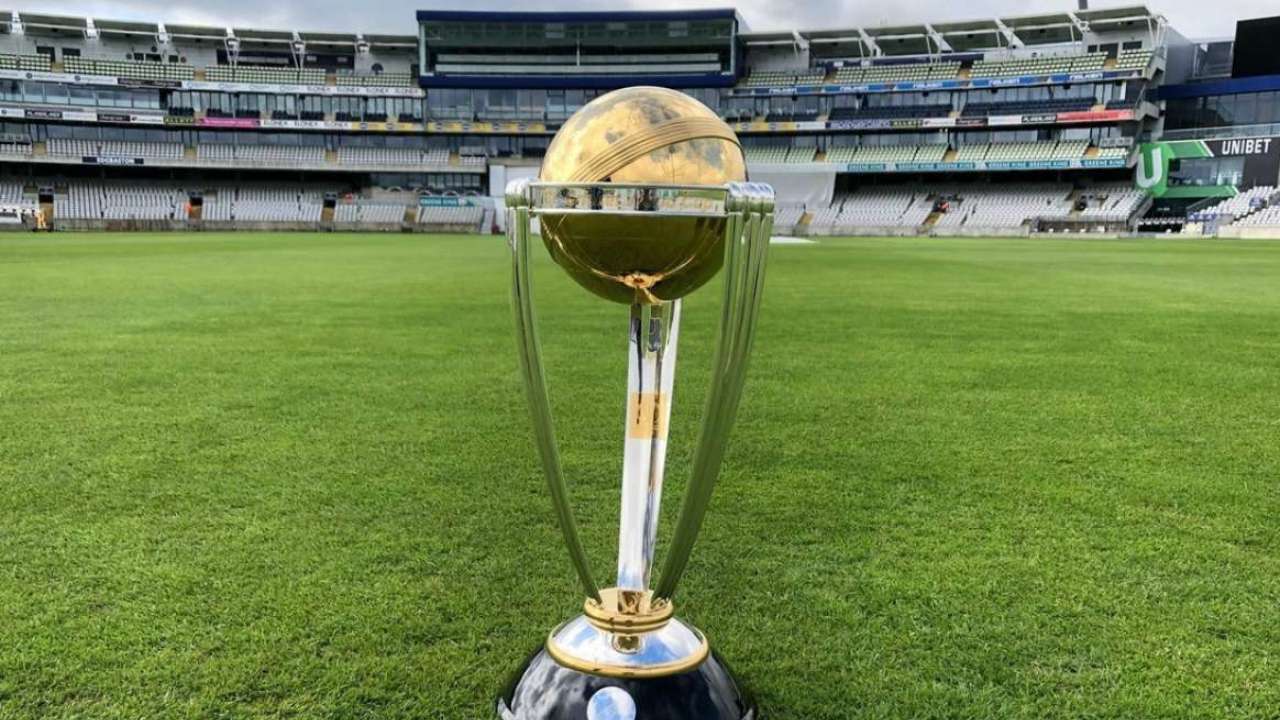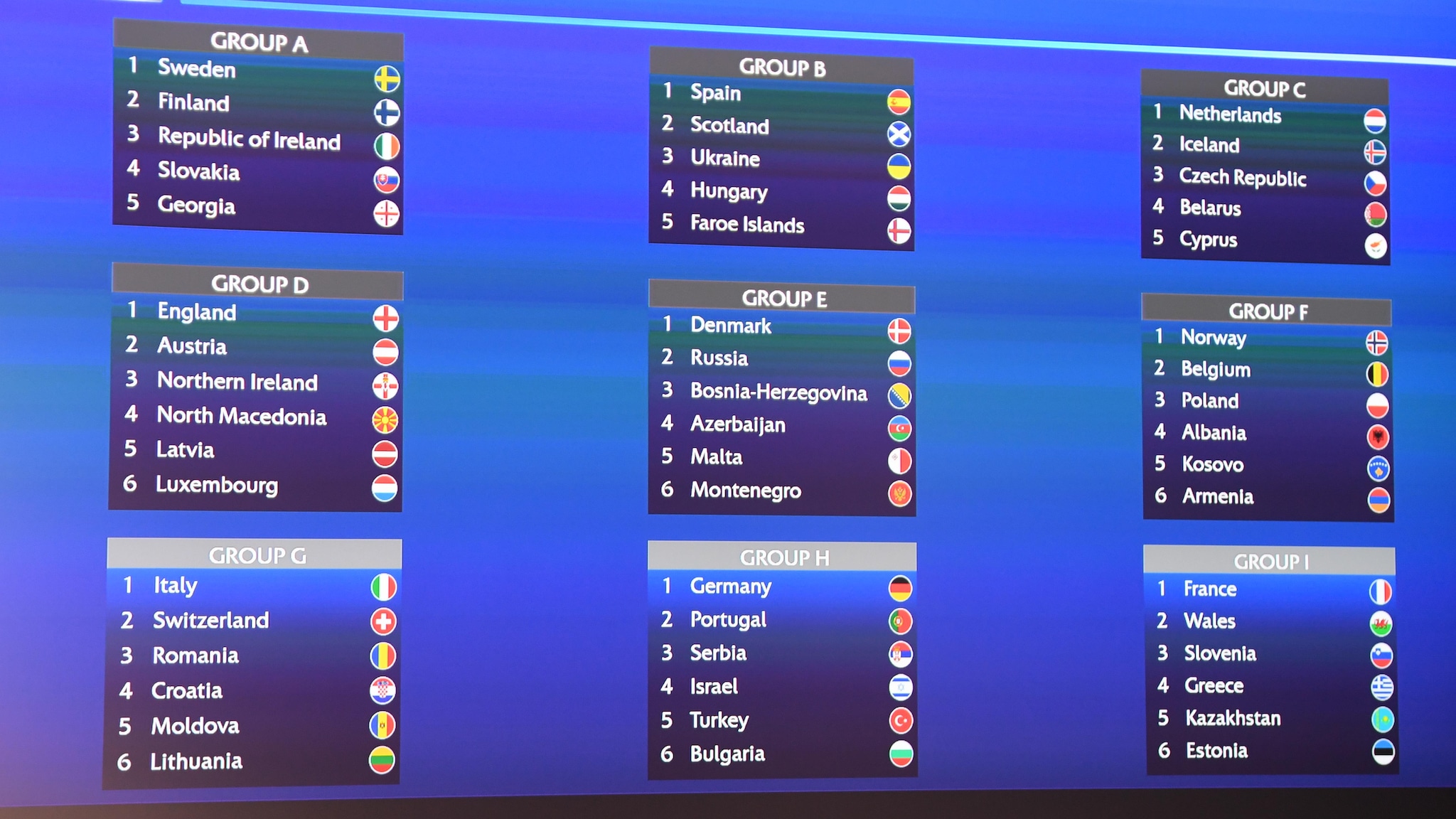Cricket World Cup locations sets the stage for this enthralling narrative, transporting us through time and across continents. From the earliest tournaments to the future’s exciting possibilities, we’ll uncover the fascinating story behind choosing the venues for this global sporting spectacle. We’ll explore how political landscapes, economic considerations, and even the unique characteristics of each pitch have shaped the game and its history.
Get ready for a whirlwind tour!
This exploration delves into the historical evolution of World Cup venue selection, examining the criteria used over the decades. We’ll map the geographical spread of matches, comparing the infrastructure and challenges faced in different regions. We’ll analyze how factors like pitch conditions and climate impact match outcomes, including the ever-important home advantage. Finally, we’ll look at the economic and social benefits for host nations and speculate on future trends in venue selection, considering sustainability and innovation.
Historical Overview of Cricket World Cup Venues
The Cricket World Cup, a global spectacle showcasing the best of international cricket, has captivated audiences worldwide since its inception. The choice of venues for this prestigious tournament has evolved significantly over the years, reflecting changes in global politics, economics, and the sport’s growing popularity. This overview examines the historical trajectory of World Cup hosting nations and the factors influencing venue selection.
Chronological List of Cricket World Cup Hosting Nations
The selection of host nations has broadened over the years, reflecting the global reach of the sport. Below is a chronological list detailing the host nations, the number of venues used, and some notable grounds. Note that co-hosting arrangements have become increasingly common.
| Year | Host Nation(s) | Number of Venues | Notable Venues |
|---|---|---|---|
| 1975 | England | 6 | Lord’s, The Oval, Edgbaston |
| 1979 | England | 6 | Lord’s, The Oval, Trent Bridge |
| 1983 | England | 8 | Lord’s, The Oval, Headingley |
| 1987 | India & Pakistan | 11 | Wankhede Stadium (Mumbai), Eden Gardens (Kolkata), Gaddafi Stadium (Lahore) |
| 1992 | Australia & New Zealand | 9 | Melbourne Cricket Ground (MCG), Sydney Cricket Ground (SCG), Eden Park (Auckland) |
| 1996 | India, Pakistan, Sri Lanka | 13 | Wankhede Stadium (Mumbai), Gaddafi Stadium (Lahore), Sinhalese Sports Club Ground (Colombo) |
| 1999 | England | 10 | Lord’s, The Oval, Old Trafford |
| 2003 | South Africa, Zimbabwe, Kenya | 11 | SuperSport Park (Centurion), Queens Sports Club (Bulawayo), Nairobi Gymkhana Club Ground |
| 2007 | West Indies | 10 | Kensington Oval (Barbados), Sabina Park (Jamaica), Queen’s Park Oval (Trinidad) |
| 2011 | India, Sri Lanka, Bangladesh | 13 | Wankhede Stadium (Mumbai), R.Premadasa Stadium (Colombo), Sher-e-Bangla National Cricket Stadium (Dhaka) |
| 2015 | Australia & New Zealand | 14 | Melbourne Cricket Ground (MCG), Sydney Cricket Ground (SCG), Eden Park (Auckland) |
| 2019 | England & Wales | 11 | Lord’s, The Oval, Edgbaston |
| 2023 | India | 12 | Narendra Modi Stadium (Ahmedabad), Wankhede Stadium (Mumbai), MA Chidambaram Stadium (Chennai) |
Evolution of Venue Selection Criteria
Initially, venue selection primarily considered the availability of suitable cricket grounds with adequate infrastructure. Later, factors like audience capacity, broadcasting facilities, and the overall logistical ease of hosting matches gained prominence. The increasing commercialization of the sport has also led to a greater emphasis on revenue generation potential, influencing the choice of venues. For instance, the selection of venues in major cities with large stadiums and strong commercial partnerships became increasingly important.
Impact of Political and Economic Factors on Venue Choices
Political stability and economic viability have played crucial roles in the selection process. The 1987 World Cup, co-hosted by India and Pakistan, demonstrated the potential complexities of co-hosting in politically sensitive regions. Conversely, the economic strength of a nation to invest in infrastructure and ensure smooth operations is also a significant factor. The 2003 World Cup, co-hosted by South Africa, Zimbabwe, and Kenya, highlighted the challenges posed by economic disparities among co-hosts.
The strong economic performance of Australia and New Zealand, for example, enabled them to successfully host the 2015 World Cup with extensive and high-quality infrastructure.
Geographical Distribution of World Cup Matches
The Cricket World Cup, a global spectacle, boasts a fascinating geographical footprint, shifting across continents and showcasing the diverse cricketing landscapes of participating nations. This distribution reflects not only the sport’s expanding reach but also the logistical and infrastructural considerations involved in hosting such a massive event. Analyzing this geographical spread reveals valuable insights into the challenges and opportunities presented by staging the tournament in various regions.
Imagine a world map, vibrant with color-coded pins marking the locations of past World Cup matches. The concentration of pins would be immediately apparent in certain regions, notably South Asia, Australia, and parts of the United Kingdom. A lighter scattering of pins would illustrate the less frequent hosting of matches in other parts of the world, highlighting the uneven geographical distribution of the tournament.
Investigate the pros of accepting world cup miami tickets in your business strategies.
World Cup Venue Distribution: A Visual Representation
A hypothetical map illustrating the geographical spread would depict South Asia (India, Pakistan, Bangladesh, Sri Lanka) as a dense cluster of pins, reflecting the frequent hosting of matches in this region. Australia and New Zealand would also show a significant concentration, representing their established cricketing infrastructure and history of hosting major tournaments. The United Kingdom, particularly England, would display a noticeable cluster, reflecting its long-standing cricketing tradition.
Other regions, such as the Caribbean, South Africa, and parts of the Middle East, would show a sparser distribution, indicative of their more recent involvement in hosting World Cup matches. The color-coding could differentiate between the various editions of the World Cup, showing how the geographical spread has evolved over time. For example, a darker shade could represent more recent editions, highlighting the expansion into new regions.
The map would visually represent the global reach of the tournament, while also emphasizing the concentration of matches in certain key cricketing nations.
Infrastructure and Facilities Comparison Across Regions
The infrastructure and facilities at World Cup venues vary significantly across different regions. Established cricketing nations like Australia, England, and India generally boast state-of-the-art stadiums with excellent seating capacity, modern amenities, and advanced broadcast facilities. These venues often include expansive media centers, well-equipped dressing rooms, and high-quality playing surfaces. In contrast, venues in some developing cricketing nations might have more basic facilities, although significant improvements have been observed in recent years.
The differences extend beyond the stadiums themselves; the surrounding infrastructure, including transportation, accommodation, and security, also plays a vital role in hosting a successful World Cup. For instance, the efficient transportation systems in cities like London or Melbourne greatly contribute to a smooth spectator experience, which may be a more significant challenge in less developed areas.
Challenges and Opportunities of Diverse Hosting Locations
Hosting the Cricket World Cup in diverse geographical locations presents both significant challenges and exciting opportunities. Challenges include adapting to different climatic conditions, ensuring adequate security and infrastructure in various regions, and navigating cultural and logistical differences. For example, hosting matches in regions with extreme heat or monsoon seasons requires careful planning and contingency measures. The opportunity lies in expanding the global reach of the sport, showcasing cricketing talent from diverse nations, and stimulating economic growth in host countries.
The 2011 World Cup in India, Pakistan, Bangladesh and Sri Lanka is a prime example of how hosting the tournament can boost tourism and infrastructure development in the region. Conversely, challenges such as ensuring security during politically sensitive times, as seen in some past editions, require careful management and collaboration between organizers and local authorities. The successful execution of the World Cup in diverse locations requires meticulous planning, collaboration, and a commitment to inclusivity and global engagement.
Impact of Venue on Match Outcomes

The venue plays a pivotal role in shaping the narrative of a Cricket World Cup match. Factors such as pitch conditions, climate, and even the size and atmosphere of the stadium can significantly influence the outcome, impacting batting strategies, bowling attacks, and ultimately, the winning team. Understanding this venue-specific impact is crucial for both players and analysts alike.The influence of venue characteristics on match results is multifaceted.
Pitch conditions, for example, can range from docile batting tracks offering little assistance to bowlers, to lively, bouncy pitches that favour seam and pace bowling. Similarly, climatic conditions, including temperature, humidity, and even wind speed, can affect the trajectory of the ball and the stamina of the players. A hot, humid day might favour a team with superior fitness, while a windy day could advantage bowlers with good control.
Specific Venue Characteristics and Match Results
Several examples highlight the impact of venue characteristics. The historically flat pitches of the Wankhede Stadium in Mumbai, India, have often resulted in high-scoring encounters, favouring batting teams. Conversely, the traditionally bowler-friendly pitches at the Gabba in Brisbane, Australia, have often witnessed lower scores and a greater advantage for the bowling side. The bouncy pitches of South Africa, for instance, are known to assist fast bowlers, leading to lower scores compared to flatter wickets in the subcontinent.
The swinging conditions in England can also drastically alter the match dynamics, favouring teams with a potent pace attack.
Average Scores in Different World Cup Venues
| Venue | Average First Innings Score | Average Second Innings Score | Notes |
|---|---|---|---|
| Wankhede Stadium, Mumbai | 175 | 160 | Historically high-scoring, flat pitch. |
| Melbourne Cricket Ground (MCG) | 165 | 155 | Large ground, often favors balanced teams. |
| The Gabba, Brisbane | 140 | 130 | Bowler-friendly, bouncy pitch. |
| Lord’s Cricket Ground, London | 150 | 145 | Swinging conditions can impact scores significantly. |
| Eden Gardens, Kolkata | 160 | 150 | Can vary depending on pitch preparation. |
Note
These are illustrative averages and may vary based on the year and specific match conditions. Actual data would require extensive analysis across multiple World Cups.*
Home Advantage in World Cup Matches
The home advantage in cricket is a well-documented phenomenon. Teams playing on their home soil often benefit from familiarity with the conditions, crowd support, and the reduced travel fatigue compared to visiting teams. This translates to a psychological advantage and a better understanding of the nuances of the pitch and the overall playing environment. For example, the Indian team’s consistent success in World Cup matches played in India is a testament to this home advantage.
Similarly, Australian teams have historically dominated at home in World Cups. The familiarity with the conditions and the roar of the home crowd can significantly impact player performance and ultimately the match outcome. This advantage isn’t insurmountable, however, as seen in upsets where visiting teams have overcome the home side’s advantage through superior skill and strategy.
Economic and Social Impact of Hosting the Cricket World Cup: Cricket World Cup Locations
Hosting a Cricket World Cup is a momentous occasion, impacting the host nation far beyond the thrilling matches on the field. The event acts as a powerful catalyst, driving economic growth and fostering a sense of national unity and pride. The ripple effects are felt across various sectors, leaving a lasting legacy on the social and economic fabric of the host country.The economic benefits are substantial and multifaceted, stemming from increased tourism, infrastructure development, and a boost to related industries.
The social impact is equally significant, creating a shared national experience that transcends geographical boundaries and fosters a sense of community.
Economic Benefits of Hosting the Cricket World Cup
The influx of international tourists during a Cricket World Cup generates significant revenue for the host nation. Hotels, restaurants, transportation services, and local businesses experience a surge in demand, leading to increased employment and tax revenue. Furthermore, the event necessitates significant infrastructure improvements, such as the construction and renovation of stadiums, transportation networks, and accommodation facilities. These improvements not only cater to the immediate needs of the tournament but also benefit the host nation long after the event concludes, enhancing its overall infrastructure and attracting further investment.
For example, the 2011 Cricket World Cup in India, Pakistan, Sri Lanka, and Bangladesh saw a massive increase in tourism and related economic activity. The infrastructure upgrades undertaken for the event continue to serve the local populations and attract future events.
- Increased tourism revenue from international visitors.
- Growth in employment opportunities across various sectors (hospitality, transportation, etc.).
- Stimulus to local businesses and the overall economy.
- Infrastructure development, including stadium upgrades and transportation improvements, leading to long-term benefits.
- Increased foreign investment and improved international image.
Social Impact of Hosting the Cricket World Cup, Cricket world cup locations
Beyond the economic gains, hosting a Cricket World Cup has a profound social impact. The event unites a nation, fostering a sense of national pride and collective identity. The shared experience of supporting the national team and celebrating victories creates a powerful sense of community and belonging. The tournament also provides a platform for cultural exchange, showcasing the host nation’s traditions and values to a global audience.
Community engagement initiatives often accompany the event, further strengthening social bonds and promoting local initiatives. The 2015 Cricket World Cup in Australia and New Zealand, for example, saw a significant boost in national pride and community spirit, uniting diverse populations through a shared passion for the sport.
- Increased national pride and a strengthened sense of national identity.
- Enhanced community spirit and social cohesion through shared experiences.
- Opportunities for cultural exchange and showcasing national heritage to a global audience.
- Promotion of social inclusion and community engagement initiatives.
- Positive impact on the social fabric and national morale.
Future Trends in Cricket World Cup Location Selection
The selection of host nations for future Cricket World Cups will be a complex process, influenced by a multitude of factors extending beyond simple cricketing prowess. The future will see a greater emphasis on sustainability, innovative approaches to venue management, and a broader geographical reach, aiming to share the spectacle with a wider global audience and foster the growth of the sport.
Predicting future hosts requires considering both established cricketing nations and emerging markets with burgeoning infrastructure and fan bases. The decision will involve a careful balancing act between established cricketing infrastructure, the potential for economic growth through hosting, and the global distribution of the sport’s popularity.
Potential Future Host Nations
The next generation of World Cup hosts will likely include a mix of established cricketing nations and emerging markets demonstrating a commitment to infrastructure development and fan engagement. Established nations like Australia, England, and India will remain strong contenders due to their existing infrastructure and large, passionate fan bases. However, nations like the United States, with its growing cricket fanbase and significant investment in infrastructure, represent a compelling new possibility.
Similarly, countries in the Caribbean, such as the West Indies, with their rich cricketing history and the potential for increased investment, could also be strong contenders. The inclusion of nations from different continents would further enhance the global reach of the tournament. For example, a joint bid from South Africa and Zimbabwe could offer a unique blend of established cricketing expertise and emerging market potential.
Sustainability and Environmental Considerations in Venue Selection
Environmental sustainability is no longer a peripheral concern but a central pillar in large-scale sporting event planning. Future World Cup bids will need to demonstrate a commitment to minimizing their environmental footprint. This includes utilizing renewable energy sources at venues, implementing robust waste management strategies, and prioritizing environmentally friendly construction and renovation practices. For example, a bid might propose using carbon-neutral stadiums with solar panels and rainwater harvesting systems.
The carbon footprint of transportation, both for players and spectators, will also be a key consideration, with bids emphasizing the use of public transportation and sustainable travel options. Furthermore, a commitment to preserving local ecosystems and biodiversity around proposed venues will be crucial.
Innovative Approaches to Venue Selection
Beyond traditional stadium-based venues, future World Cups could explore innovative approaches to location selection. This might involve utilizing a wider range of venues, including smaller, more localized grounds, to bring the tournament to a broader range of communities. The use of technology, such as virtual reality and augmented reality, could also enhance the fan experience, allowing for a more immersive and engaging viewing experience regardless of the physical location of the match.
This might involve broadcasting matches using innovative technology to enhance the fan experience and make the game more accessible globally. The exploration of hybrid models, combining traditional stadium events with digital engagement, is another potential area for innovation. This could include utilizing smaller venues for preliminary matches, while reserving larger stadiums for the semi-finals and finals.
The Cricket World Cup’s journey across the globe is a captivating tale of sporting prowess, political maneuvering, and economic impact. From the historical venues that have witnessed legendary moments to the future locations that promise even more thrilling matches, the selection of venues is as much a part of the World Cup’s legacy as the matches themselves. The diverse landscapes and cultural contexts in which the game is played add another layer of richness to this global sporting event, making each tournament a unique and memorable experience.
So, let the games begin – and the discussions continue!



